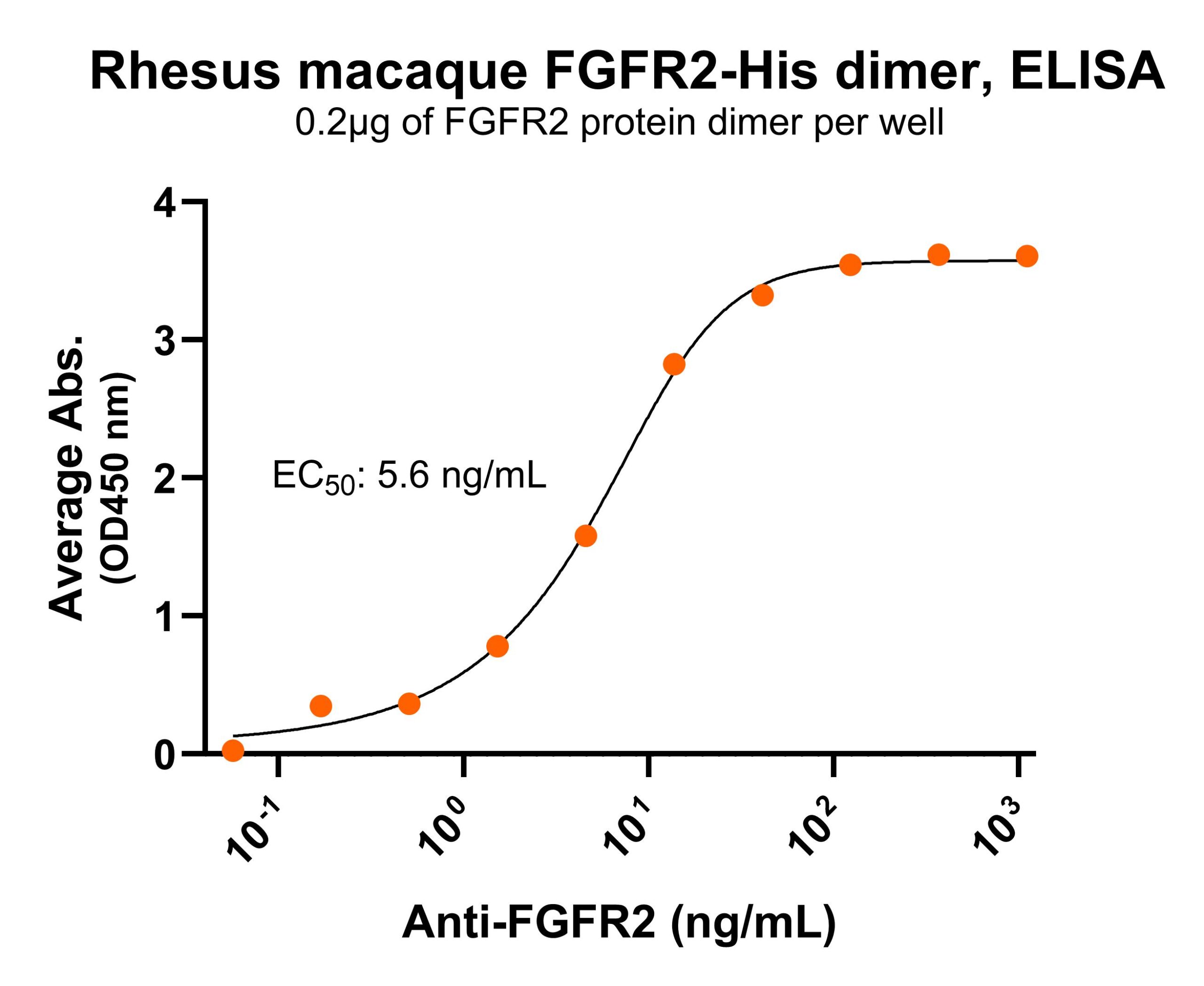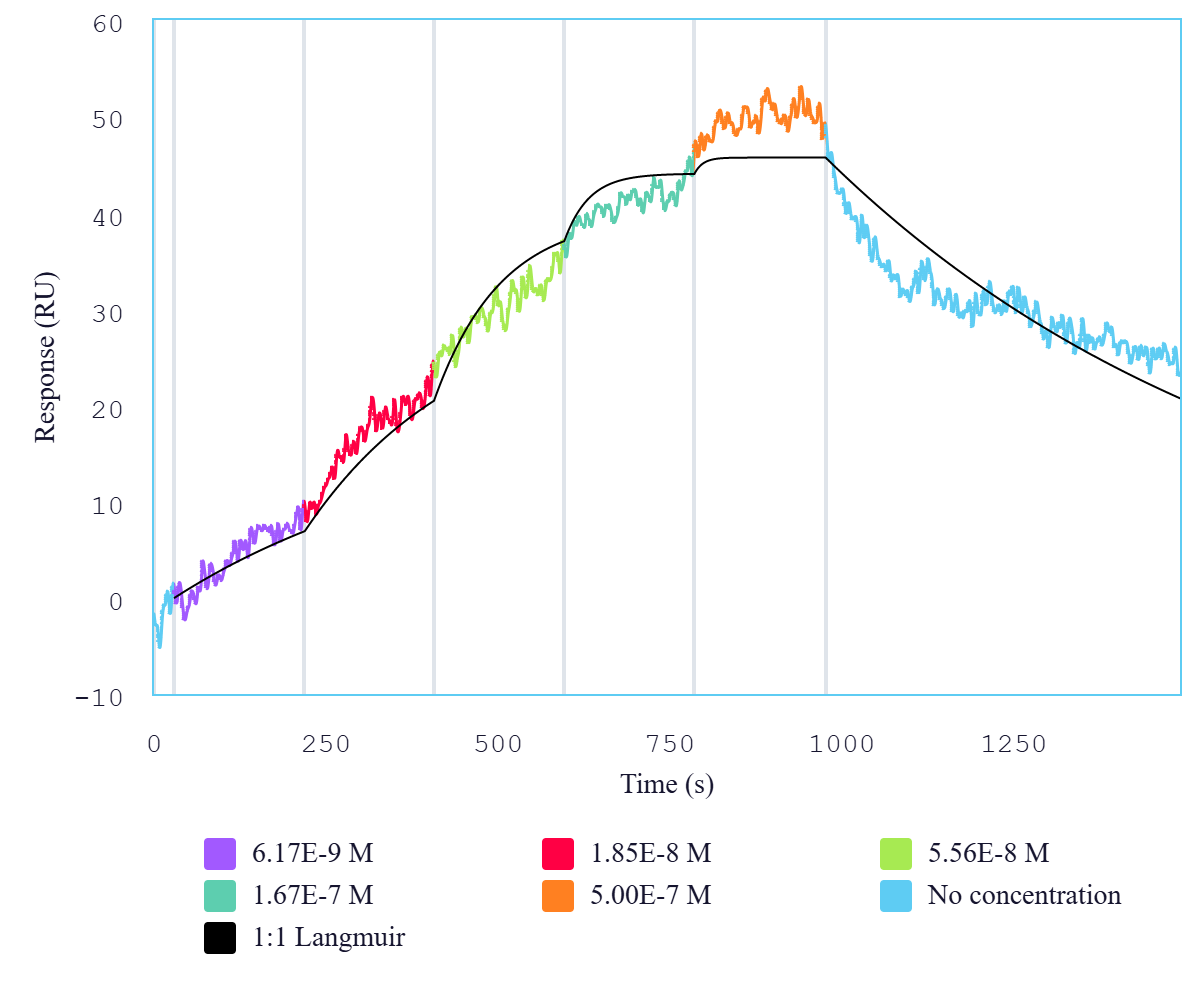 MW: Molecular Weight marker reduced condition
NR: FGFR2 dimer under non-reduced condition
MW: Molecular Weight marker reduced condition
NR: FGFR2 dimer under non-reduced condition Immobilized Rhesus macaque FGFR2 protein dimer
Immobilized Rhesus macaque FGFR2 protein dimer His tag (Cat. No. CSP-25294-01) can bind anti-human FGFR2 polyclonal antibody with half maximal effective concentration (EC50) range of 2.8-11.2 ng/mL (QC tested).
His tag (Cat. No. CSP-25294-01) can bind anti-human FGFR2 polyclonal antibody with half maximal effective concentration (EC50) range of 2.8-11.2 ng/mL (QC tested).